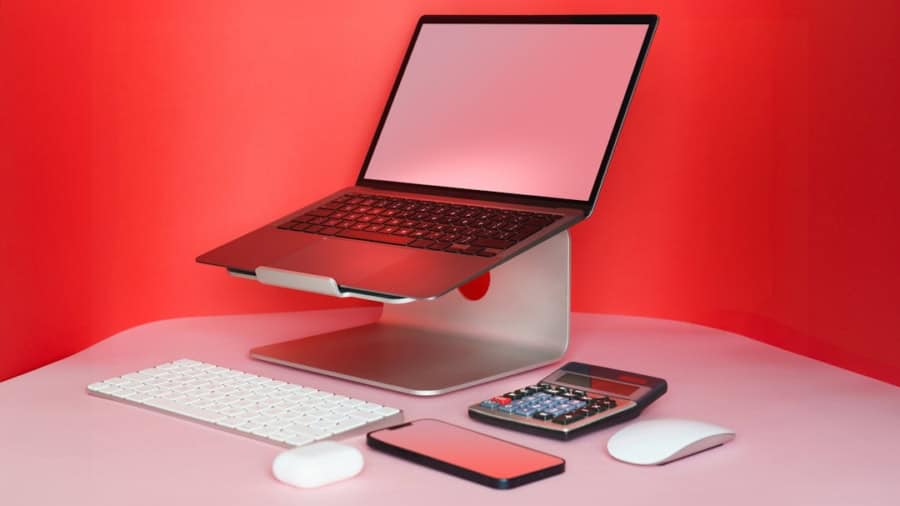In an era where mobility and efficiency are paramount, thin and light laptops have emerged as essential tools for professionals on the go. These devices, characterized by their sleek designs and lightweight constructions, cater to the needs of a diverse range of users, from business executives to creative professionals. The evolution of technology has allowed manufacturers to pack powerful hardware into compact frames, making it possible for users to enjoy high performance without the burden of heavy equipment.
As remote work and flexible job arrangements become increasingly common, the demand for these portable computing solutions continues to rise. Thin and light laptops are not merely about aesthetics; they represent a significant shift in how we approach computing. With advancements in materials and engineering, these devices offer impressive battery life, robust processing capabilities, and high-resolution displays—all while maintaining a form factor that is easy to carry.
This combination of power and portability makes them ideal for mobile workforces who require reliable technology that can keep pace with their dynamic work environments. As we delve deeper into the benefits and considerations surrounding thin and light laptops, it becomes clear that they are more than just a trend; they are a vital component of modern work culture.
Key Takeaways
- Thin and light laptops are designed to be portable and convenient for mobile workforces, offering a balance of performance and portability.
- Benefits of thin and light laptops for mobile workforces include increased productivity, flexibility, and improved collaboration, as well as reduced strain on employees who are constantly on the move.
- When choosing thin and light laptops for mobile workforces, important features to consider include battery life, weight, durability, connectivity options, and performance capabilities.
- Security considerations for thin and light laptops in mobile workforces include data encryption, biometric authentication, remote wipe capabilities, and secure VPN access to protect sensitive information.
- Case studies demonstrate how thin and light laptops have supported mobile workforces by enabling remote work, improving efficiency, and enhancing communication and collaboration among team members.
Benefits of Thin and Light Laptops for Mobile Workforces
The advantages of thin and light laptops extend far beyond their physical dimensions. One of the most significant benefits is their portability. Professionals who frequently travel or work in various locations appreciate the ease with which they can transport these devices.
Unlike traditional laptops that can be cumbersome and heavy, thin and light models can easily fit into backpacks or briefcases, allowing users to maintain productivity without being weighed down by their equipment. This level of convenience is particularly beneficial for sales representatives, consultants, and remote workers who need to be agile in their work environments. In addition to portability, thin and light laptops often come equipped with advanced features that enhance user experience.
Many models boast high-resolution displays, backlit keyboards, and touchscreens, which contribute to a more engaging and efficient workflow. Furthermore, the integration of powerful processors and ample RAM ensures that these devices can handle demanding applications, making them suitable for tasks ranging from data analysis to graphic design. The combination of lightweight design and high performance empowers mobile workforces to accomplish their goals without compromise.
Features to Consider When Choosing Thin and Light Laptops for Mobile Workforces
When selecting a thin and light laptop for a mobile workforce, several key features should be taken into account to ensure that the device meets the specific needs of its users. First and foremost, battery life is a critical consideration. Professionals often find themselves working in environments where access to power outlets is limited, making it essential to choose a laptop that can last through long meetings or travel days without needing a recharge.
Many modern thin and light laptops offer impressive battery longevity, with some models providing up to 15 hours or more on a single charge. Another important feature is connectivity options. In today’s digital landscape, seamless connectivity is vital for collaboration and communication.
Look for laptops that offer multiple USB ports, HDMI outputs, and support for the latest wireless standards such as Wi-Fi 6 or Bluetooth 5.0. These features ensure that users can easily connect to peripherals, external displays, and networks without hassle. Additionally, consider the laptop’s build quality; a durable chassis can withstand the rigors of travel while maintaining a professional appearance.
Security Considerations for Thin and Light Laptops in Mobile Workforces
As mobile workforces become more prevalent, security concerns surrounding thin and light laptops have also intensified. These devices often contain sensitive information, making them attractive targets for cybercriminals. Therefore, it is crucial to implement robust security measures to protect data integrity.
One effective strategy is to choose laptops equipped with hardware-based security features such as fingerprint readers or facial recognition technology. These biometric authentication methods provide an additional layer of protection against unauthorized access. Moreover, organizations should prioritize software security by ensuring that all devices are equipped with up-to-date antivirus programs and firewalls.
Regular software updates are essential for patching vulnerabilities that could be exploited by malicious actors. Additionally, employing encryption technologies can safeguard sensitive data stored on the laptop’s hard drive. By taking these proactive steps, businesses can mitigate risks associated with mobile computing while empowering their workforce to operate securely in various environments.
Case Studies: How Thin and Light Laptops Have Supported Mobile Workforces
Numerous organizations have successfully integrated thin and light laptops into their mobile workforces, reaping the benefits of enhanced productivity and flexibility. For instance, a leading marketing agency adopted thin and light laptops for its team of remote workers who frequently travel to meet clients. The lightweight design allowed team members to easily carry their devices during trips while still having access to powerful software tools necessary for creating presentations and analyzing market data on the go.
As a result, the agency reported a significant increase in client satisfaction due to faster turnaround times on projects. Another compelling case study involves a global consulting firm that transitioned its consultants from traditional laptops to thin and light models. The firm found that its consultants were able to collaborate more effectively during client meetings thanks to the portability of their devices.
With the ability to quickly share screens and access cloud-based resources, consultants could provide real-time insights during discussions, leading to more informed decision-making by clients. This shift not only improved client relationships but also enhanced internal collaboration among team members working remotely.
Best Practices for Integrating Thin and Light Laptops into Mobile Workforces
Successfully integrating thin and light laptops into a mobile workforce requires careful planning and execution. One best practice is to provide comprehensive training for employees on how to maximize the capabilities of their new devices. This training should cover essential topics such as software usage, security protocols, and troubleshooting common issues.
By equipping employees with the knowledge they need to effectively use their laptops, organizations can foster a culture of productivity and innovation. Additionally, organizations should establish clear policies regarding device usage and security protocols. This includes guidelines on connecting to public Wi-Fi networks, using virtual private networks (VPNs), and reporting lost or stolen devices promptly.
By creating a structured framework around laptop usage, businesses can minimize risks while empowering employees to work efficiently in various settings. Regularly reviewing these policies ensures they remain relevant as technology evolves.
The Future of Thin and Light Laptops in Supporting Mobile Workforces
As technology continues to advance at an unprecedented pace, the future of thin and light laptops looks promising for mobile workforces. Innovations in materials science may lead to even lighter devices without compromising performance or durability. Additionally, advancements in battery technology could result in laptops with extended battery life, allowing professionals to work longer hours without needing access to power sources.
Furthermore, the integration of artificial intelligence (AI) into laptop functionality may enhance user experience significantly. AI-driven features could optimize performance based on user behavior, automate routine tasks, or provide personalized recommendations for software applications. As remote work becomes increasingly normalized across industries, the demand for versatile computing solutions will only grow stronger, positioning thin and light laptops as indispensable tools for future mobile workforces.
The Importance of Thin and Light Laptops for Mobile Workforces
In conclusion, thin and light laptops have become integral components of modern mobile workforces, offering unparalleled portability without sacrificing performance or functionality. Their lightweight design enables professionals to remain productive while on the move, catering to the demands of an increasingly flexible work environment. As organizations continue to embrace remote work models, investing in these devices will be crucial for maintaining efficiency and competitiveness.
The benefits of thin and light laptops extend beyond mere convenience; they empower employees with the tools they need to excel in their roles while ensuring data security remains a top priority. By understanding the features that matter most when selecting these devices and implementing best practices for integration, businesses can harness the full potential of thin and light laptops in supporting their mobile workforces. As we look ahead, it is clear that these innovative devices will play a pivotal role in shaping the future of work.
In addition to the importance of thin and light laptops in supporting mobile workforces, businesses can also benefit from utilizing tools like NeuronWriter for content SEO optimization. This tool can help companies improve their online presence and reach a wider audience through well-crafted and optimized content. By incorporating NeuronWriter into their digital marketing strategy, businesses can enhance their visibility and attract more potential customers. To learn more about how NeuronWriter can benefit your business, check out this article.
FAQs
What are thin and light laptops?
Thin and light laptops are portable computers that are designed to be slim and lightweight, making them easy to carry around for mobile workers. They typically have a smaller form factor and are designed for on-the-go use.
How do thin and light laptops support mobile workforces?
Thin and light laptops support mobile workforces by providing a portable and convenient computing solution. They allow employees to work from anywhere, whether it’s at a client’s site, in a coffee shop, or while traveling. This flexibility can improve productivity and efficiency for mobile workers.
What are the key features of thin and light laptops for mobile workforces?
Key features of thin and light laptops for mobile workforces include long battery life, fast processing power, lightweight design, and connectivity options such as Wi-Fi and cellular data. These features enable mobile workers to stay connected and productive while on the go.
What are the benefits of using thin and light laptops for mobile workforces?
The benefits of using thin and light laptops for mobile workforces include increased mobility, improved productivity, and the ability to work from anywhere. These laptops also often have security features to protect sensitive data while working remotely.
What should businesses consider when choosing thin and light laptops for their mobile workforce?
When choosing thin and light laptops for a mobile workforce, businesses should consider factors such as battery life, durability, performance, security features, and compatibility with the organization’s software and systems. It’s important to select laptops that can meet the specific needs of the mobile workforce.



